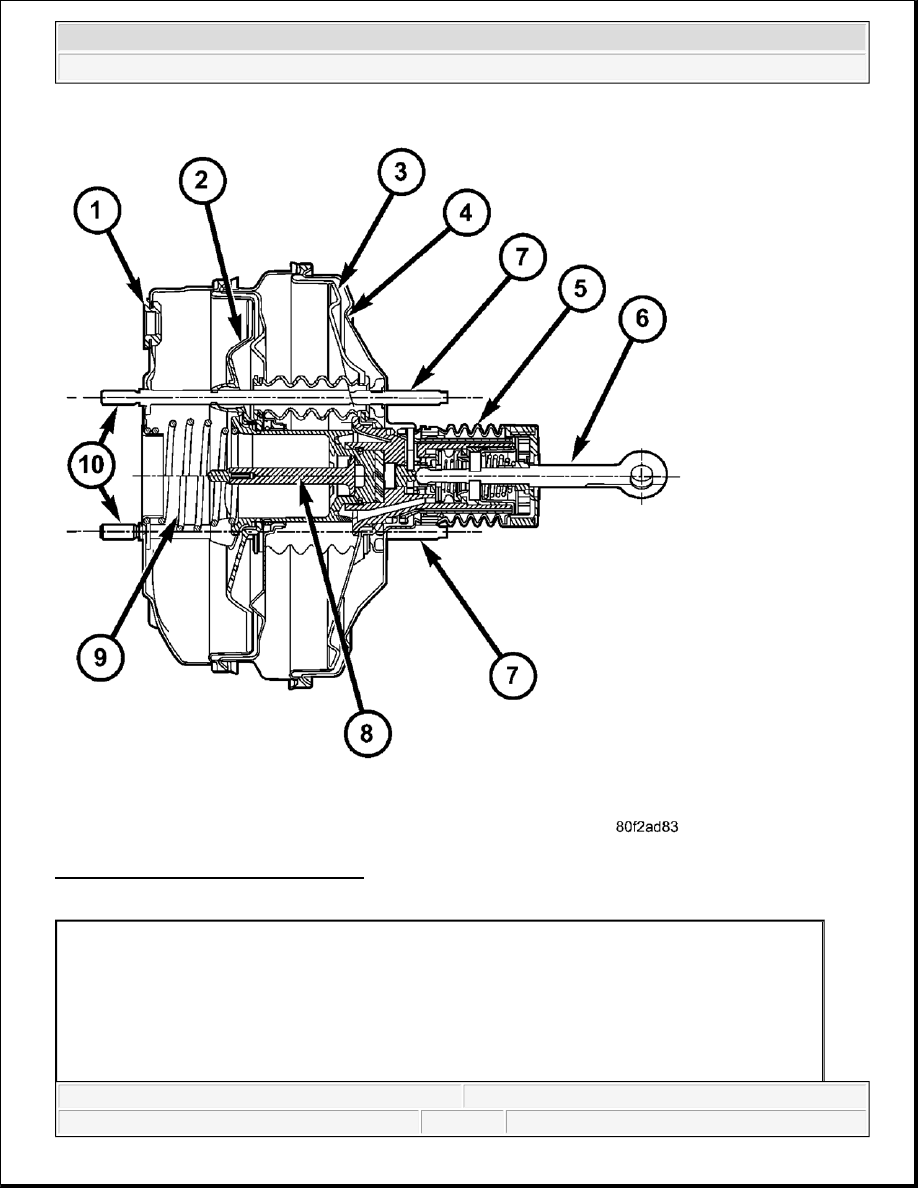Dodge Nitro. Manual - part 365

Fig. 50: Power Brake Booster Cut Away
Courtesy of CHRYSLER LLC
1 - VACUUM CHECK VALVE
2 - FRONT DIAPHRAGM
3 - REAR DIAPHRAGM
4 - HOUSING
5 - SEAL
6 - PRIMARY PUSH ROD (TO BRAKE PEDAL)
7 - BOOSTER MOUNTING STUDS
2007 Dodge Nitro R/T
2007 BRAKES Base - Service Information - Nitro